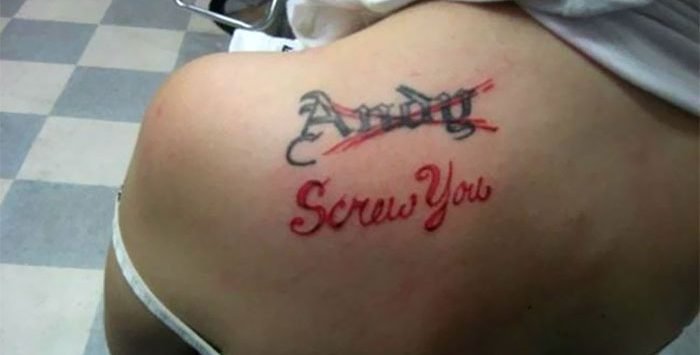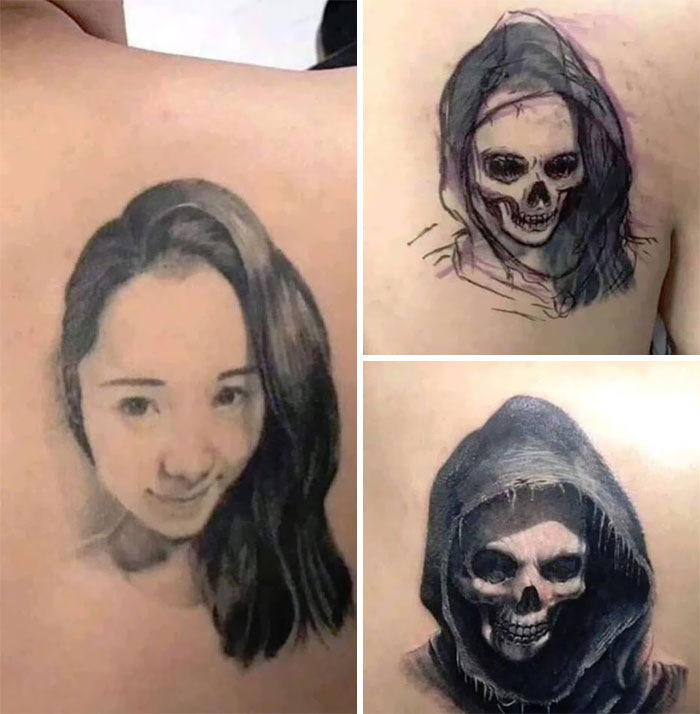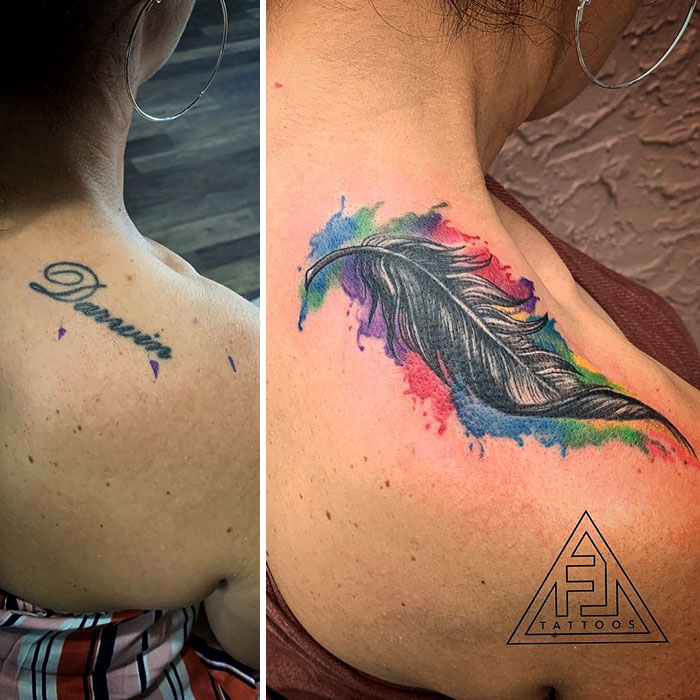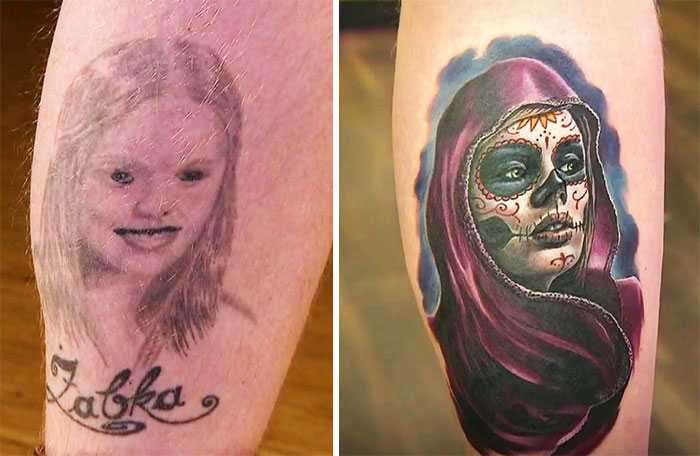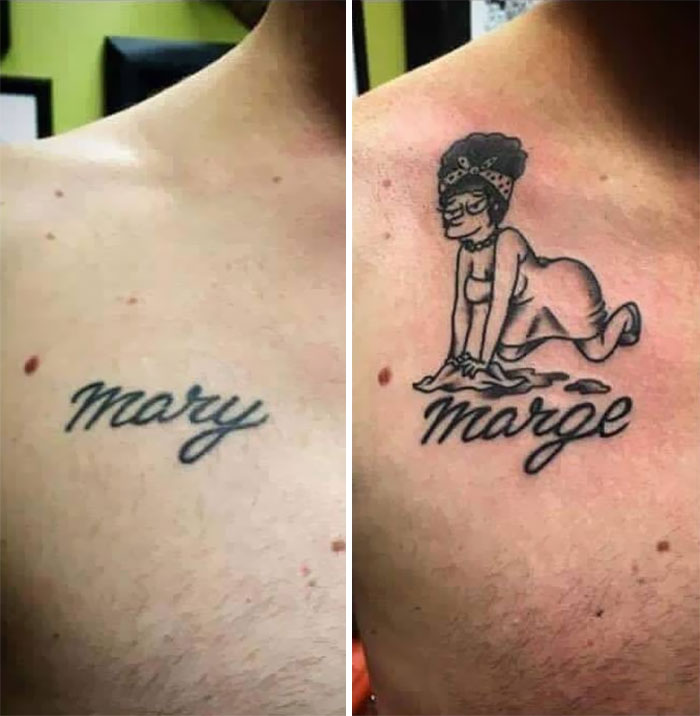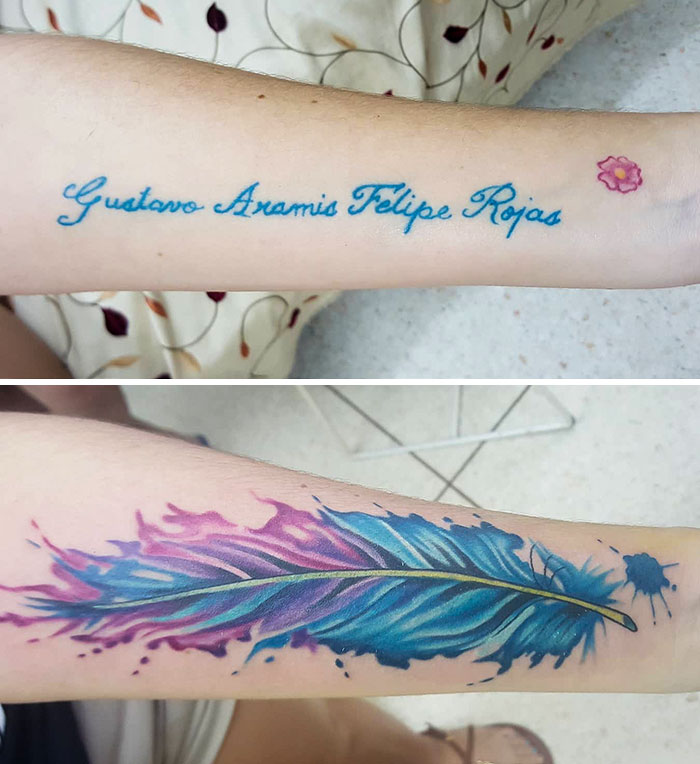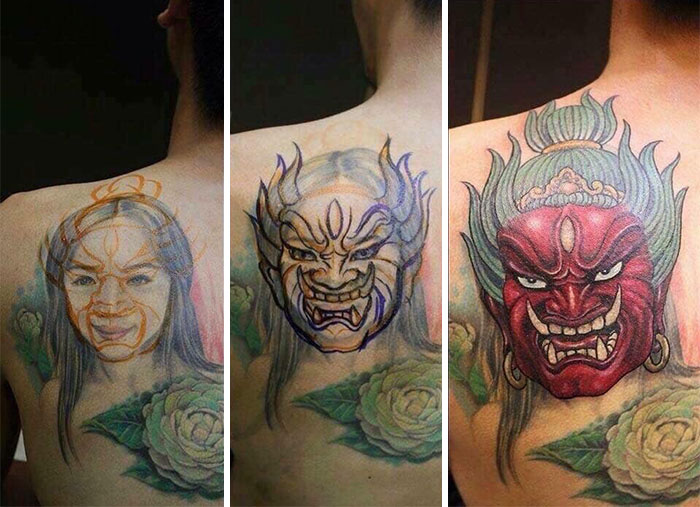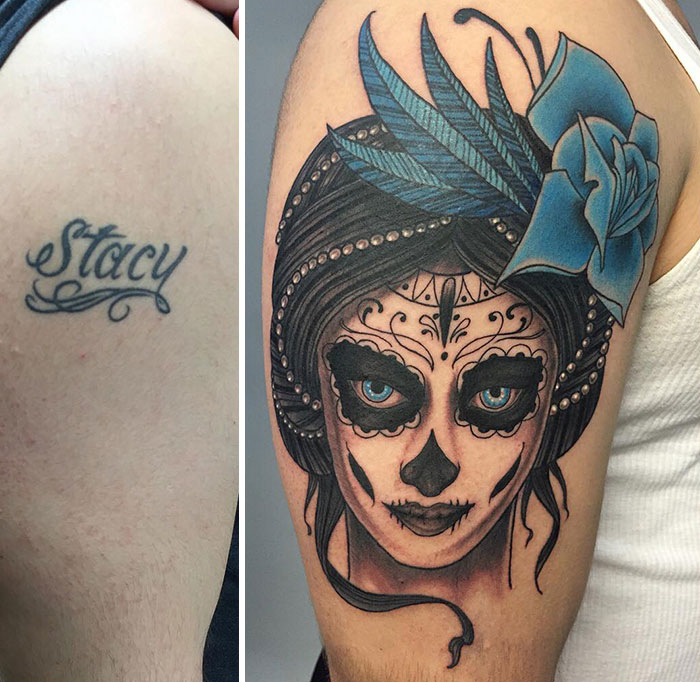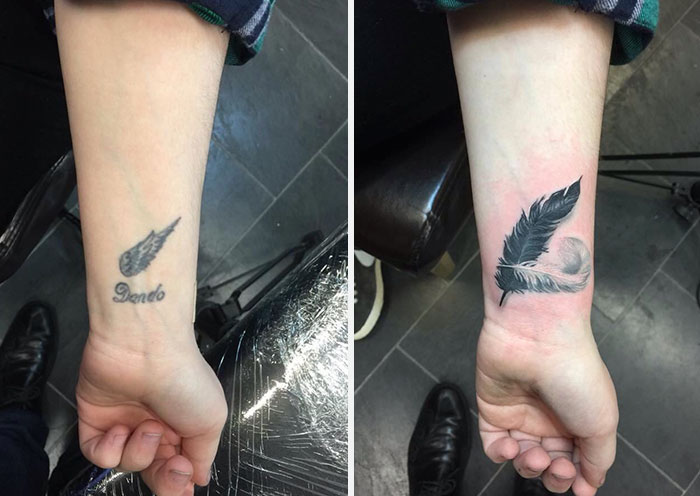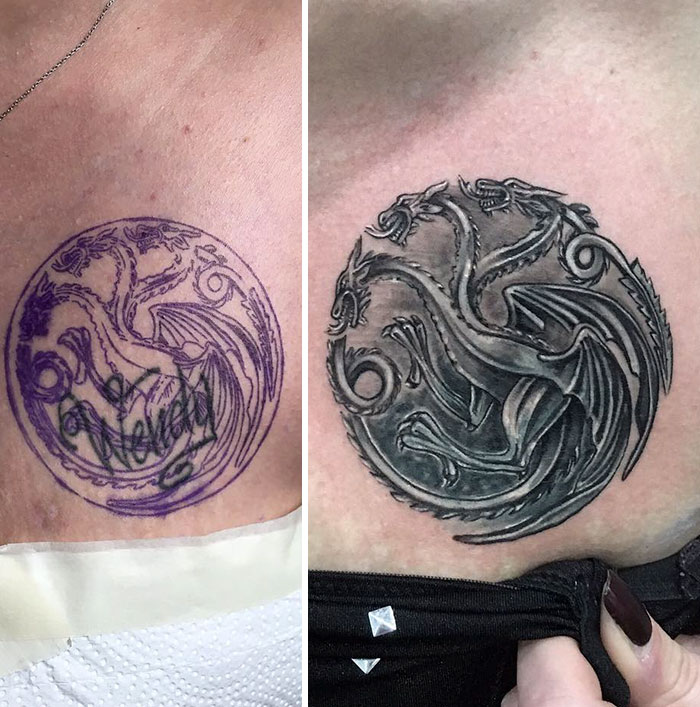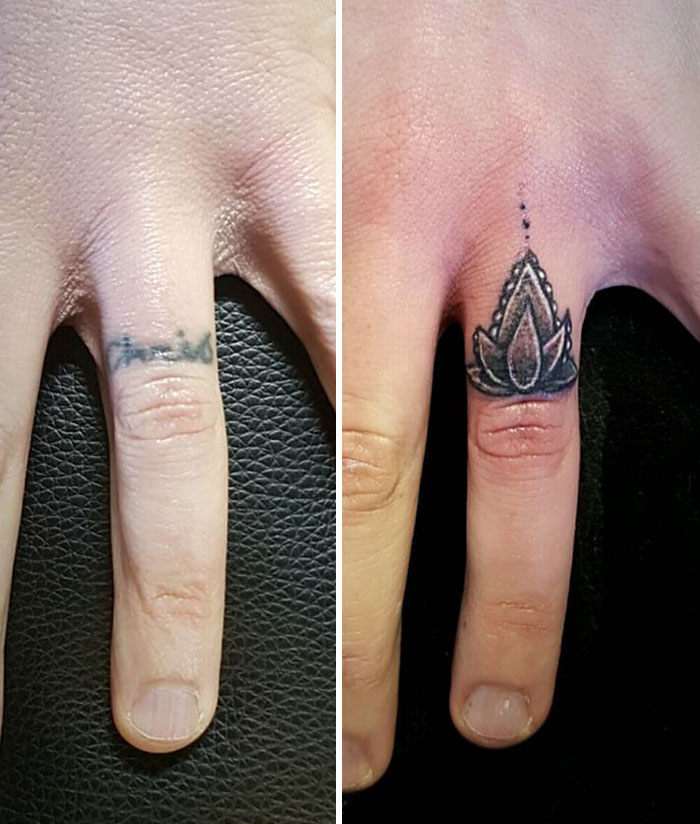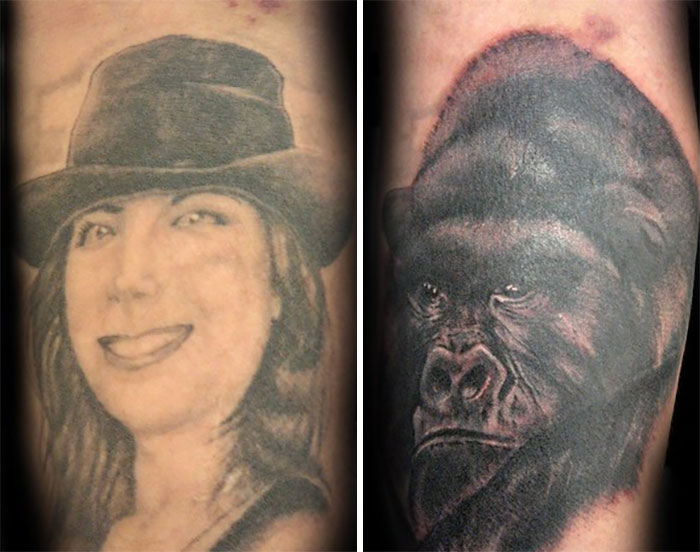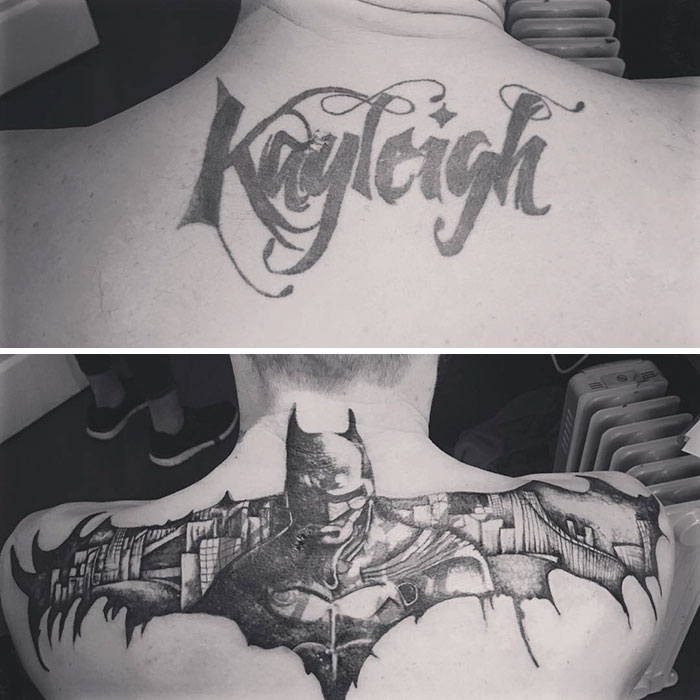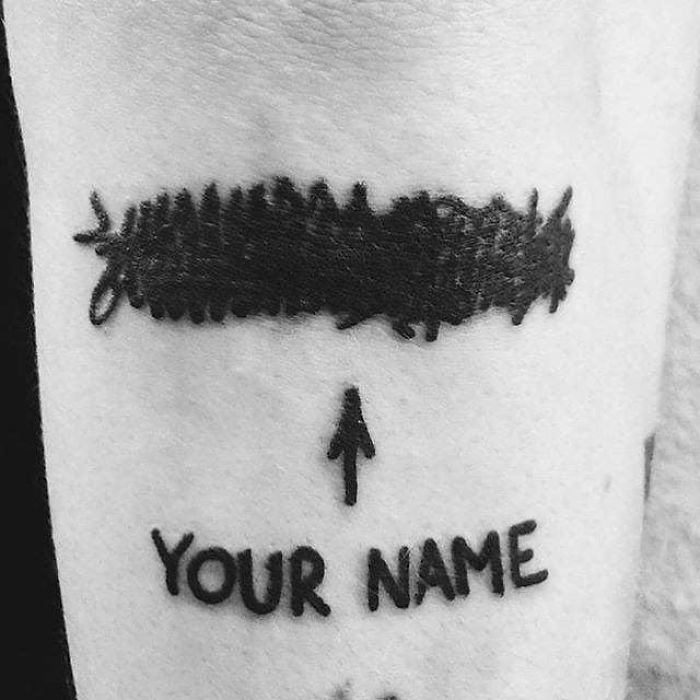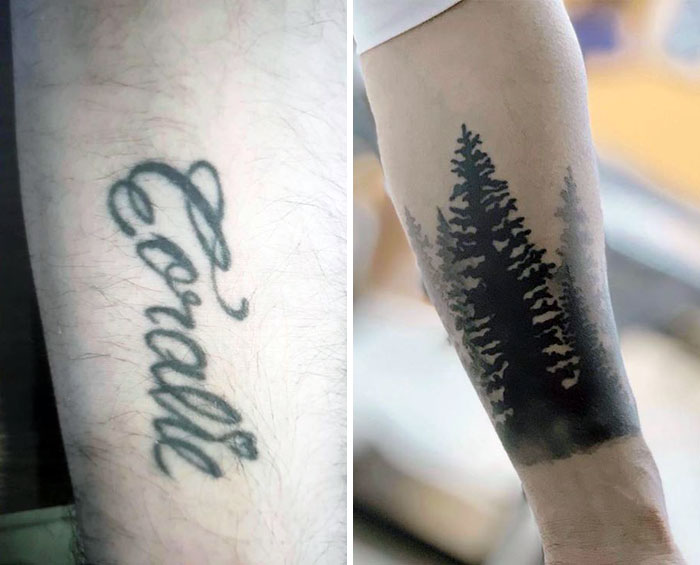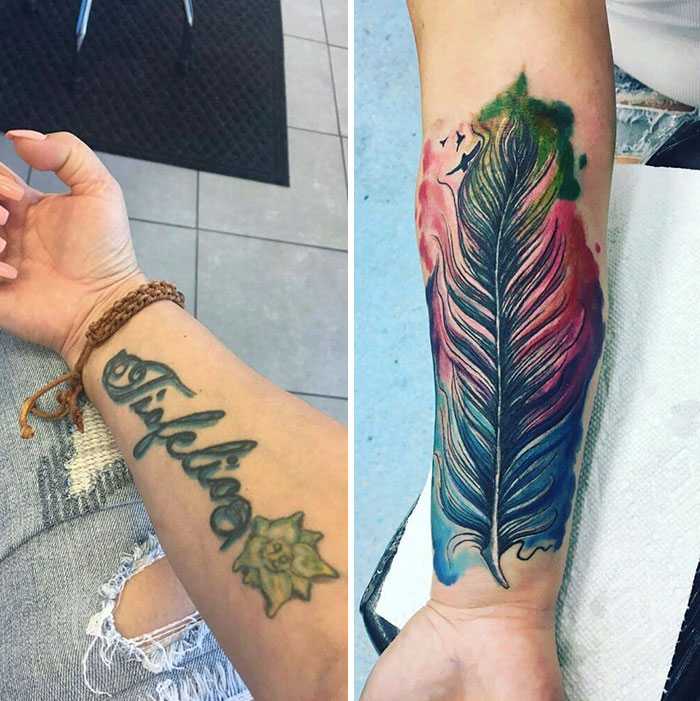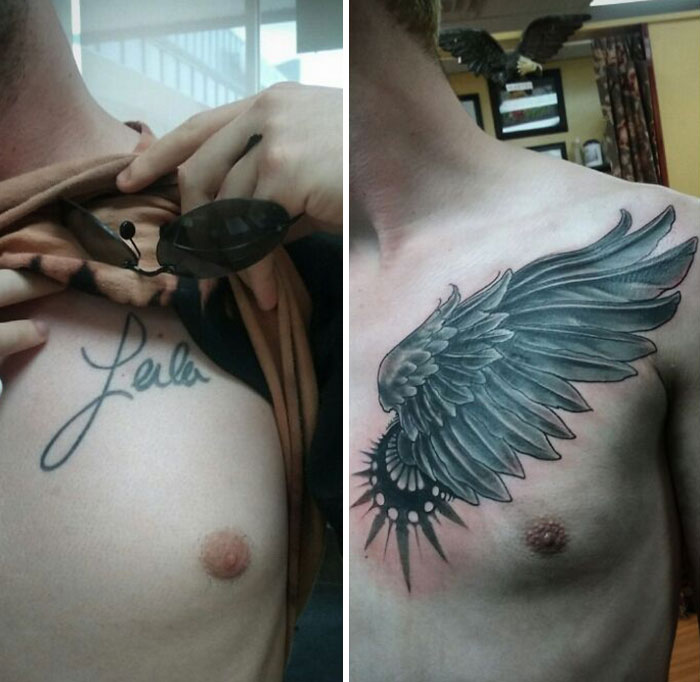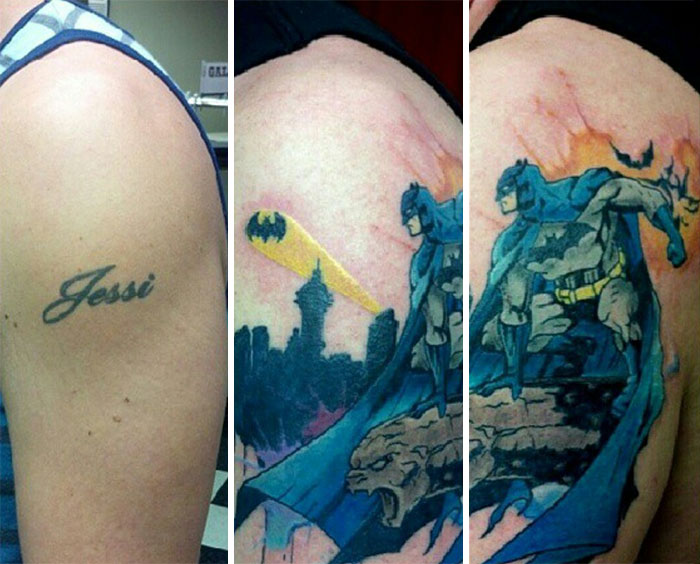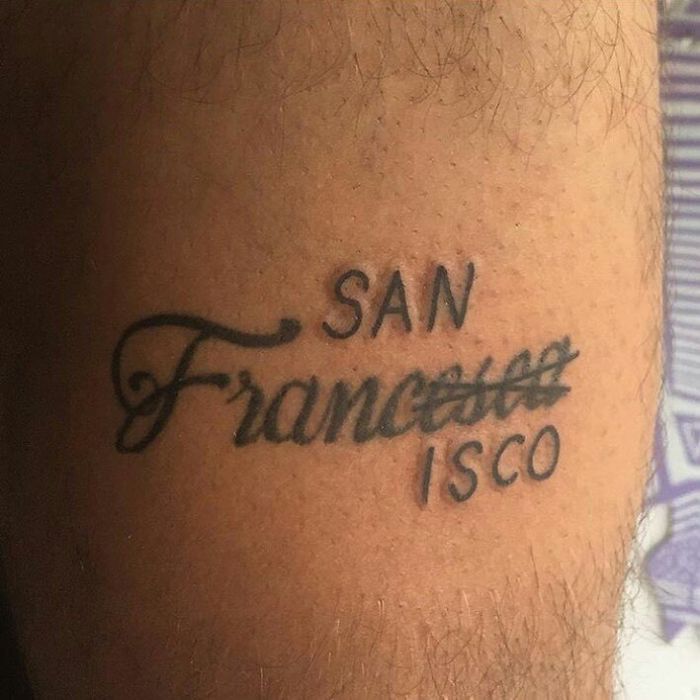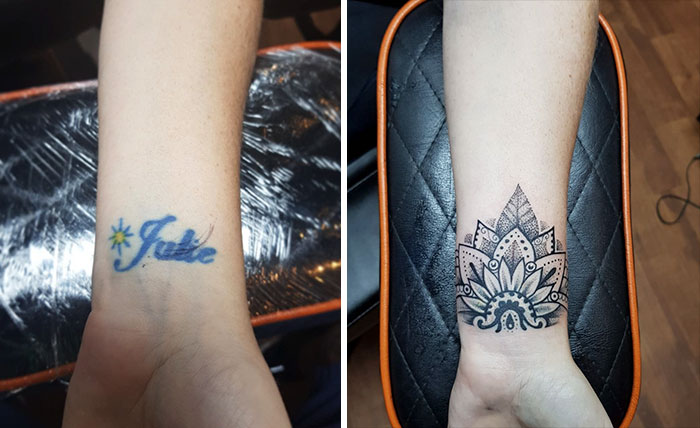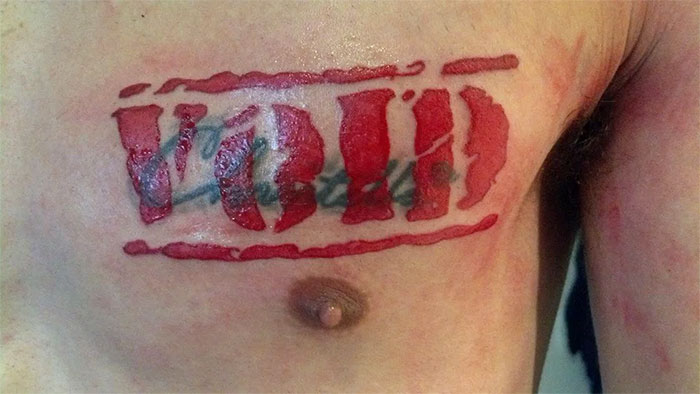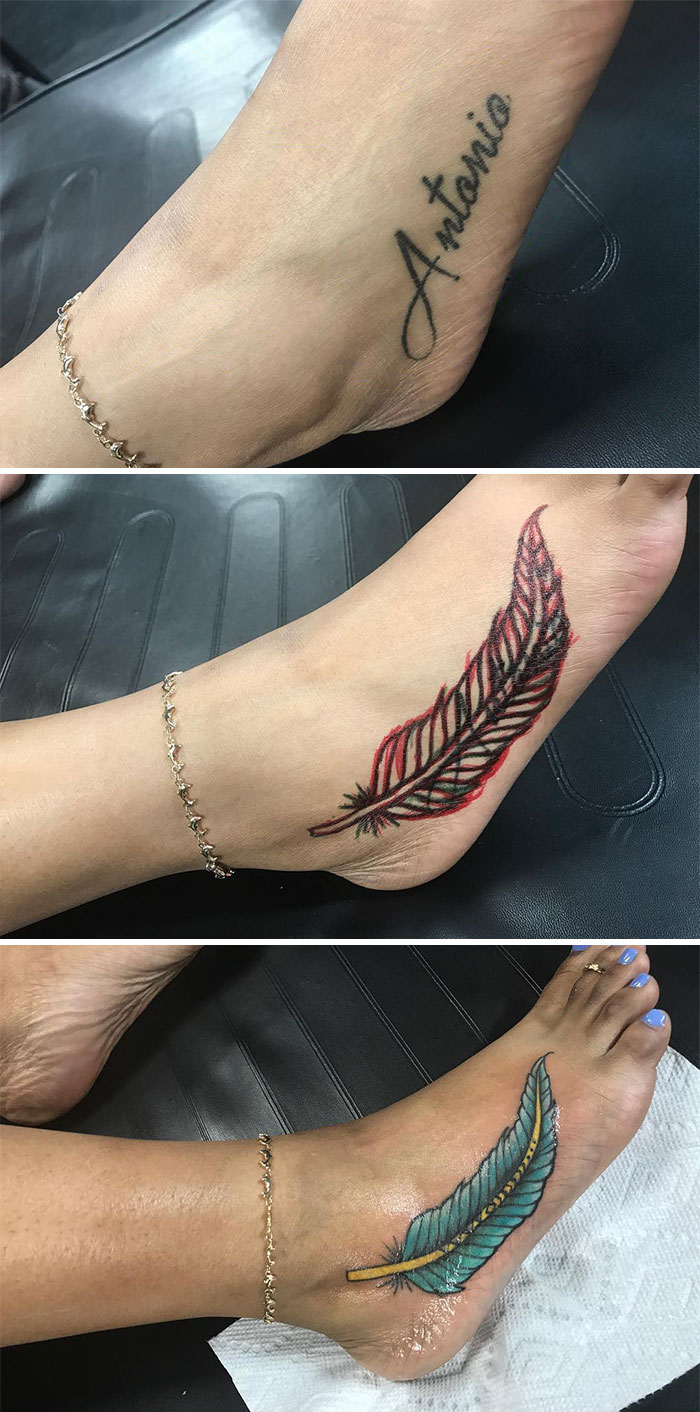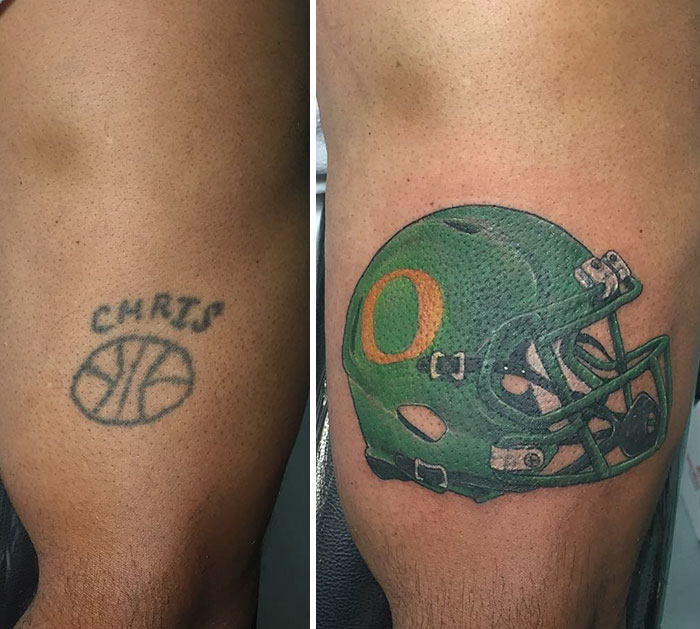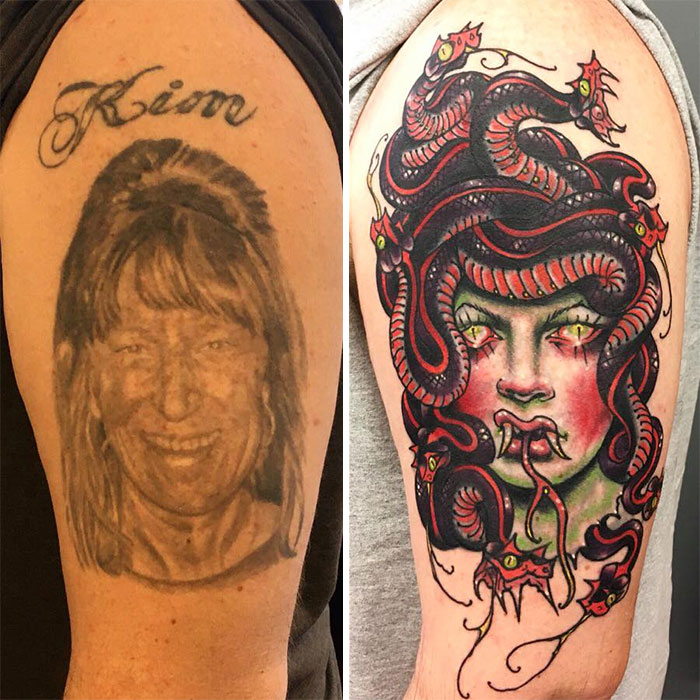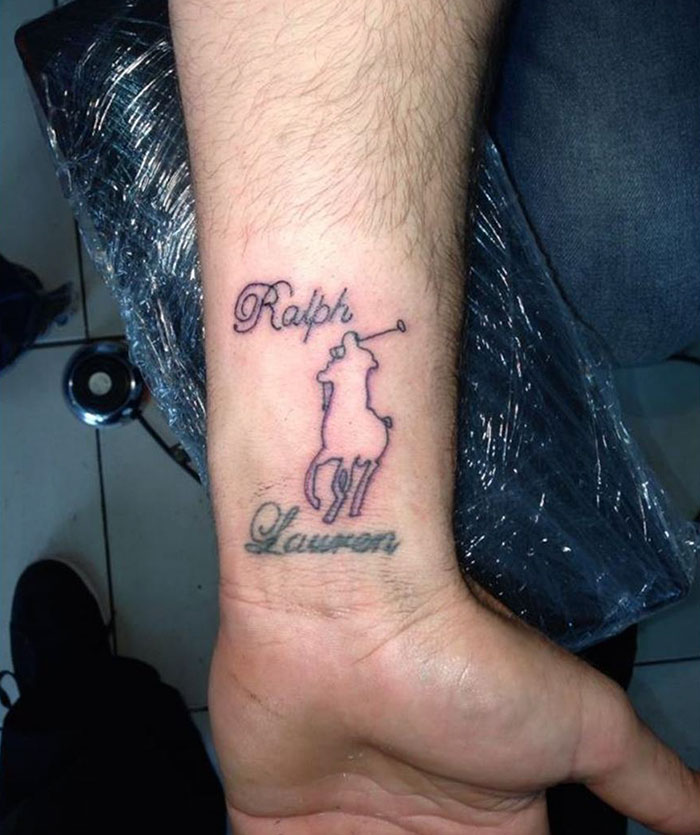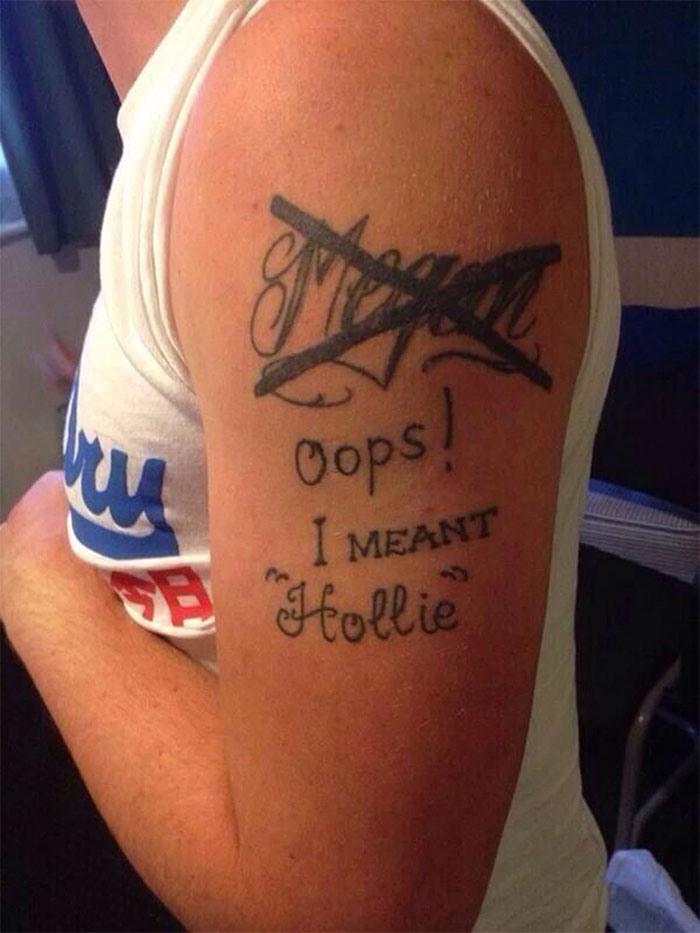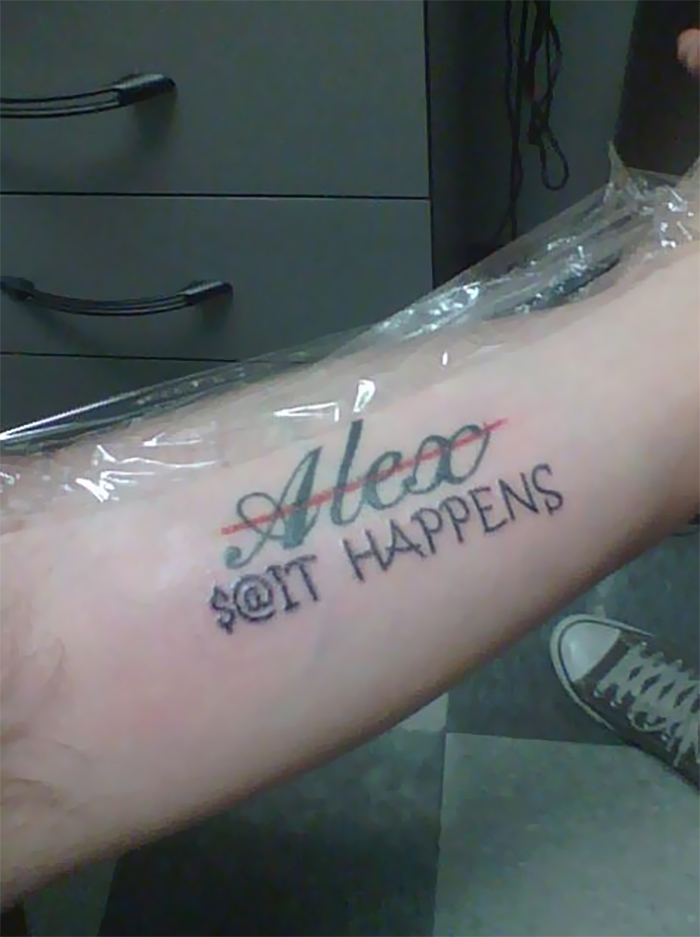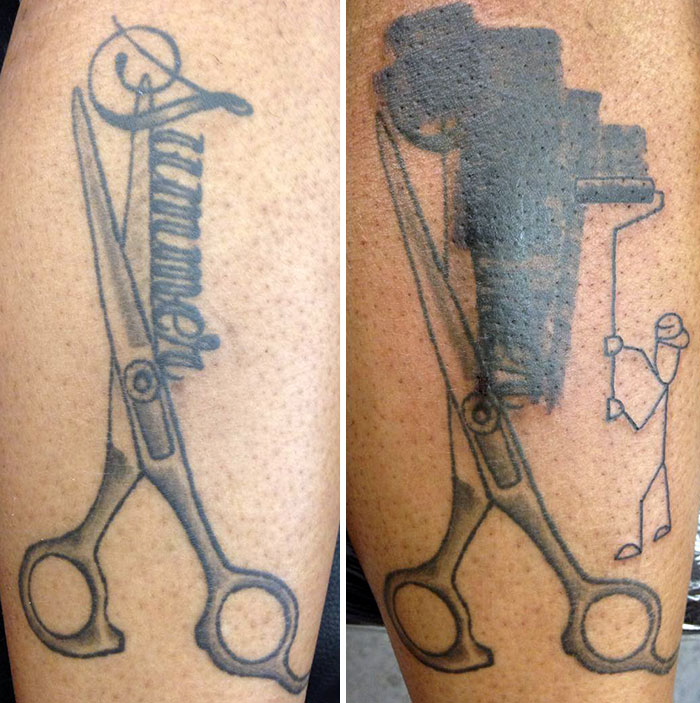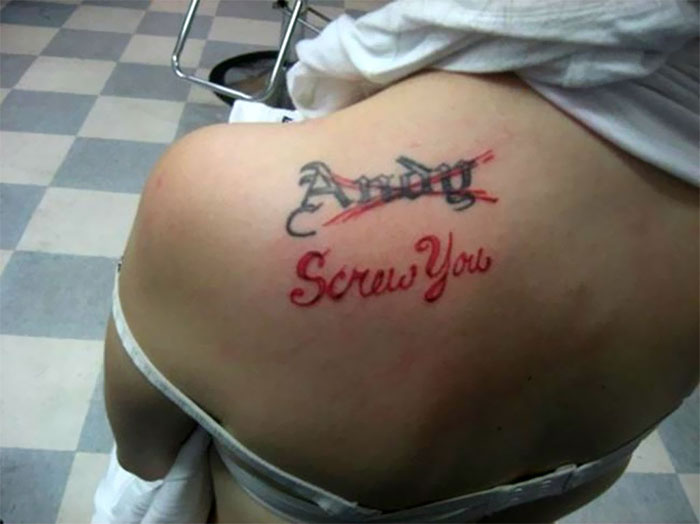Everyone who wants a cover-up tattoo has to be open to modifications that will allow it to completely hide the old one. And the more complex the cover-up design is in terms of fine details and rich shading, and the more solid, deep colors it has in it, the better it will turn out. For example, elements like layers of scales on fish, variegation in flower petals, and swirls of hair in different shades are really useful. Also, deep purples, blues, greens, and other dark, cool colors with lots of black shading work really well. Especially if the original tattoo is dark. On the other hand, warmer colors tend to be less successful at covering an old tattoo.
Typically, the new design has to be larger than the old tattoo, so that it provides more than sufficient coverage. According to Painful Pleasures, the shape of the new design and the way it’s angled over top of the old one will determine how much larger the cover-up tattoo needs to be to successfully mask what’s underneath it.
Once the ink of the new tattoo settles, the old design may peek through somewhat, but a few more passes should take care of that problem, if it arises.


